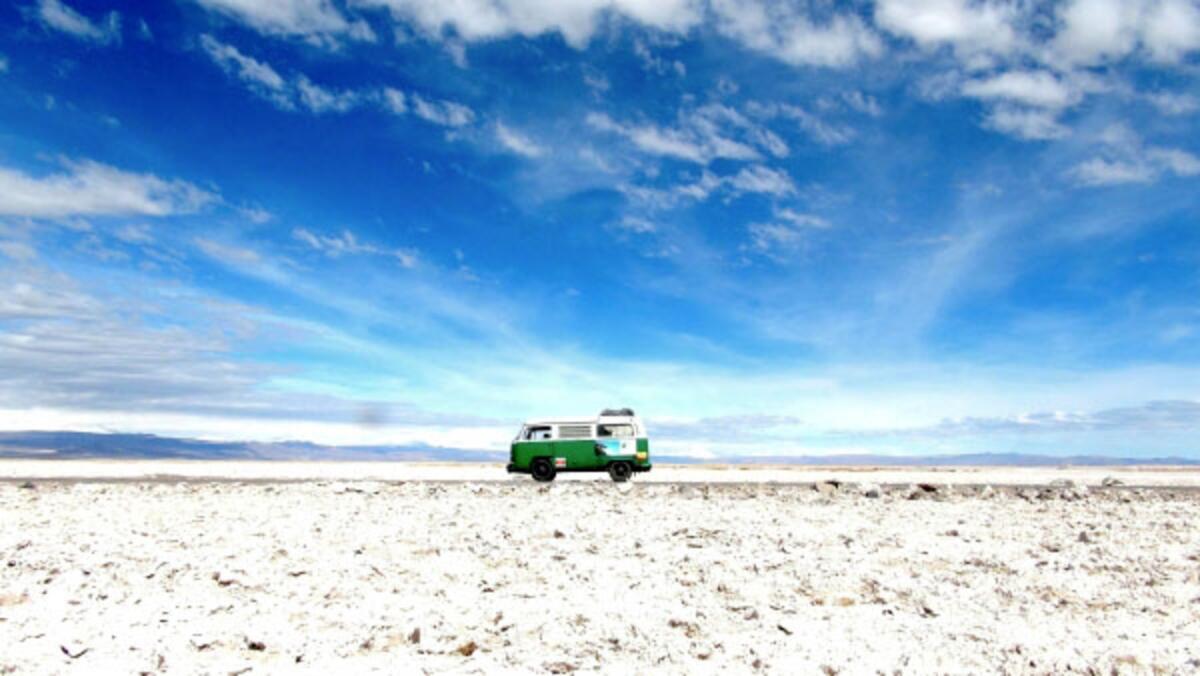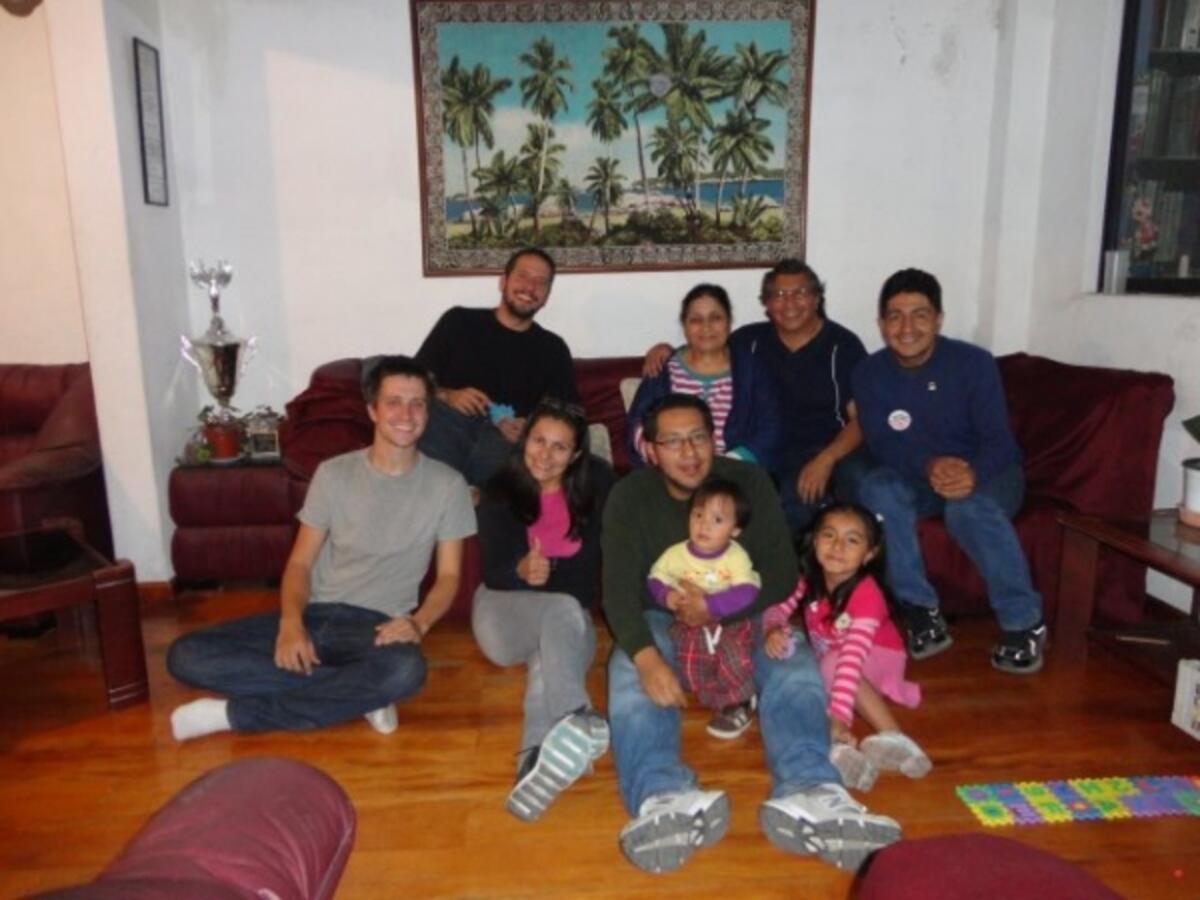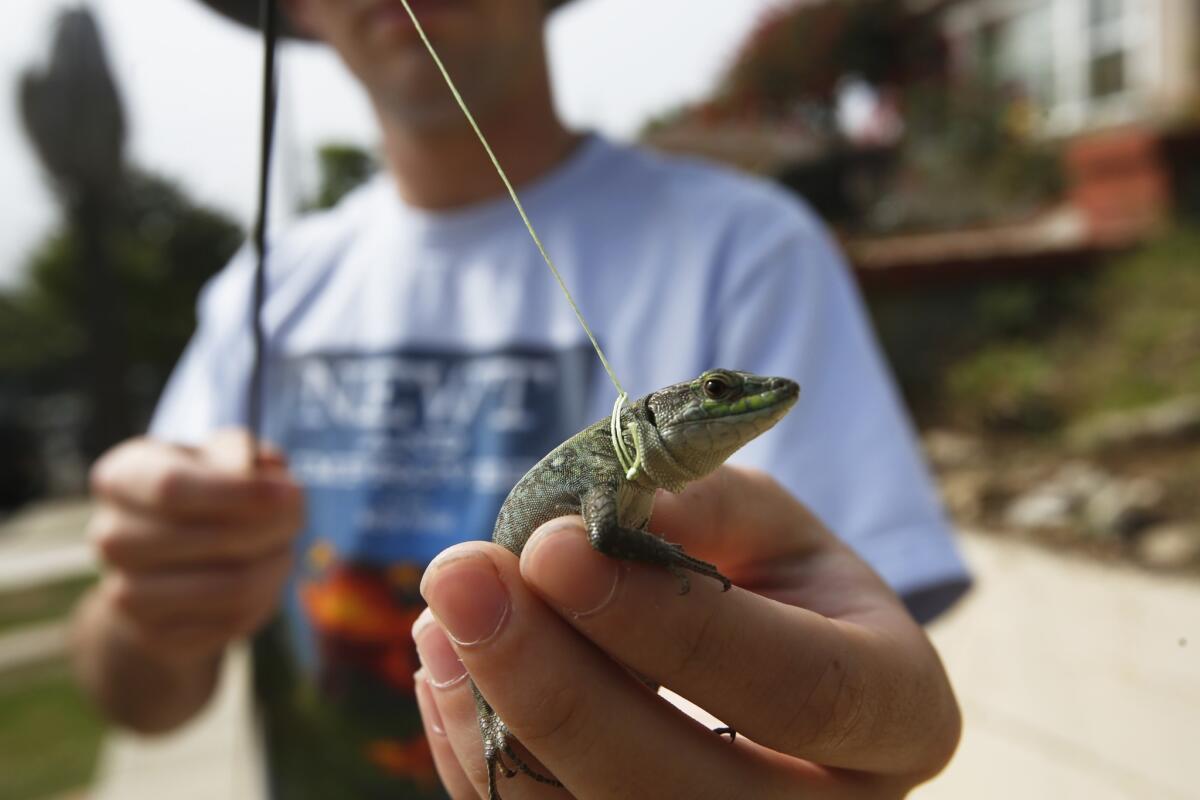On Latin America road trip, VW bus is charming, disarming
Two Brazilians find their classic VW bus — a vehicle that goes out of production next month — inspires kindness and camaraderie among strangers abroad.
- Share via
T
he 1971 Volkswagen bus, painted in the green, yellow and white of Brazil's flag, picked a good place to break down.
Emilio Zagaia and Felipe Luis da Costa had just arrived in the small Guatemalan city of Coban. They were two Brazilians in a strange town, but they received some unexpected help right away.
"The city's local Volkswagen club is looking for you," their mechanic told them. "They saw your car and took a picture of it."
The "club" turned out to be Francisco and Karla Archila, owners of two Bugs — one pink, one white — and one bus. They stayed in the couple's house, its walls covered by photos of Volkswagens, for a week.
They heard about the more than 20 other VW travelers whom the Archilas, both 27, had taken in and had a "caipirinha night," in which the travelers taught the locals how to make Brazil's national drink.
They swapped cultural tips, and the Guatemalans shared their family history of harvesting orchids. But the conversation never veered far from the cars.
"Francisco is completely addicted," Da Costa says. "But I understand. These cars carry so much history with them. Francisco would always say, 'It's not madness. It's passion.'"
As the last generation of the iconic vans was being cranked out before Volkswagen finally ends production in Brazil next month, Zagaia and Da Costa were driving one from Mexico to their homeland on a modern, Latin American version of the VW hippie road trip.
Over the course of their eight-month, 13,500-mile journey, VW enthusiasts and hard-core travelers sought out the Kombi, as it's known in Brazil. (And that spot of bother in Guatemala? It was — amazingly — the only bit of car trouble in all those miles.)
The minimalist classic acted as a kind of goodwill ambassador.
The bus "completely changed the journey," Da Costa says. "If we were in any other car, people wouldn't have treated us with such warmth."

It seems only right that the two men's trip ended in Brazil, which kept the flame of production alive the longest.
The Volkswagen "Type II" was originally conceived by Dutchman Ben Pon in 1947, based on the original "Type I," widely known in the English-speaking world as the Beetle. By 1950, the vans were coming off the line in Germany. Three years later — and long before being produced in North America, starting in Mexico in 1970 — they were being built here in Sao Paulo.

The van parks on salt flats in Chile's Atacama Desert. (From Zagaia and Da Costa's travel blog) More photos
The functional and charming van has been little changed here since.
"You can use it to haul cargo or nine people," says Carlos Leite, commercial vehicles marketing manager for Volkswagen Brasil. "It's work and it's play. It's the simplicity of the design that pleases people.
"And since the parts are so simple, and mechanically interchangeable — there is none of our modern-day robotification — they're easy to repair and very rarely lose value over time."
Because of new safety requirements imposed by the Brazilian government, the Kombinationsfahrzeug, or "Combination vehicle," will go out with a bang at year's end with a special blue-and-white limited release.
But the van is still ubiquitous in Brazil. Kombis, mostly in white, chug up and down the modest hills of Sao Paulo, delivering construction materials, food and beer.
And Da Costa is sure their trip shows the van will live on for a while yet.
"I don't care if they stop making them," he says. "The old ones work just as well. They'll never die."

Zagaia, now 41, was working in Tulum, Mexico, as a freelance diving instructor when he bought the Westfalia camper to shuttle his international students to classes. One student said he had to take a trip across Latin America in it. Later, another said that kind of road trip was a life's dream. Finally, so many said the same thing, he was convinced.
Later, back home at an Easter lunch in Brazil, he got to know Da Costa, now 25, who was dating his niece.
I don't care if they stop making them. The old ones work just as well. They'll never die."— Felipe Luis da Costa
Because Da Costa had studied journalism and knew a bit about the Web, Zagaia got excited and invited him to join, and he jumped at the opportunity.
They could do the classic trip, but with modern updates. They'd get a little of the money from crowdsourcing online and some sponsors, and they'd keep a blog — with a very Flower Power logo. They'd film enough of it to make a small movie.
Although they got a bit of financial help from the Web strategies, once they were on the road, it was mostly back to the basics. Alongside local fare, they ate cold tuna sandwiches and slept in the van. They parked in front of police stations, firehouses or banks with 24-hour guards to stay safe. They relied on their trusty Kombi to keep plugging along. And they relied on other people.
"We met lots of other Kombi travelers on the road," Da Costa says. "And we realized that, despite being inspired by this history, we were nowhere near as hippie as a lot of the other people out there on the road. Some are going from Alaska to Argentina and back. Some never get off the road."


The Morocho family in Cuenca, Ecuador, took in the duo for a week. Da Costa is at left, with Zagaia behind him. (From Zagaia and Da Costa's travel blog) More photos
A generation of hippies, travelers, surfers, scrimpers and lovers packed into the van, most famously in the 1960s and 1970s. As the title of the Bob Dylan album featuring a blue VW van on the cover summed up, the atmosphere was freewheelin'.
The seemingly inherent warmth and friendliness of the car inspired — and still inspire — special feelings, says Bill Staggs, who runs Vintage Surfari Wagons with his wife, Diane, renting out old vans in Costa Mesa for trips around the state.
"They were organic and human-friendly, and people almost immediately started anthropomorphizing them. They became characters in their lives, and people went as far as to give them names," Staggs says. "Even kids now only 6 or 7 years old wave at them from behind. They know this is something cool."

The Kombi faithfully hauled Zagaia and Da Costa through El Salvador, Honduras, Nicaragua, Costa Rica and Panama, into Colombia and up and over the Andes Mountains. As they approached the top of the Cajas National Park near Cuenca, Ecuador — almost 15,000 feet above sea level — they became worried the car might not make it.
The Kombi "took it in stride. It was all good," Zagaia says.
But it was cold up there. Luckily, a park guard spotted them quickly and gave them shelter, as they were a special kind of traveler. "One must always take in pilgrims," he told them, citing something he remembered from the Bible.
They never got anything close to a hostile reception. Sure, they had to pay off a few crooked cops early in the trip — often standard fare for foreigners in Central America. But they experienced no street crime whatsoever, even though they were passing through some of the most violent countries on the planet.
As they wound down through Peru, Bolivia, Chile and Argentina, then Uruguay, the pair found that the Kombi helped to establish a South American connection often lacking between the Spanish- and Portuguese-speaking parts of the continent.
"They often didn't know much more about Brazil than the stereotypes — soccer, beautiful women, the beach," Da Costa says. "And we admit we don't know much more about countries like Peru or Bolivia either."
That doesn't mean some old arguments didn't come up, too.
In Rio Cuarto, Argentina, they argued with a young man named Diego, over Coke and Fernet, as to who was the best soccer player of all time — Brazil's Pele or Argentina's Diego Maradona. Not long after, the beloved Kombi rolled back into Brazil, six months before its production reached the end of the line.
But the journey isn't over. In Guatemala, caipirinha nights continue to go on once a month. And Zagaia's Kombi is in the shop. He expects it to be ready for the road soon.
Bevins is a special correspondent.
Follow @latgreatreads on Twitter
More great reads
On safari for San Pedro's invasive lizards

I basically have a job ... that allows me to be a 5-year-old for the rest of my life."
Seeking the truth behind the tragedy of JFK's assassination
The point is not to say 'I got it!' We simply want to know the truth."
Seems as if all of Fresno has adopted the Bulldogs

The thing about Fresno is, we’re a very large city but we still have that small-town feeling."
Sign up for Essential California
The most important California stories and recommendations in your inbox every morning.
You may occasionally receive promotional content from the Los Angeles Times.








